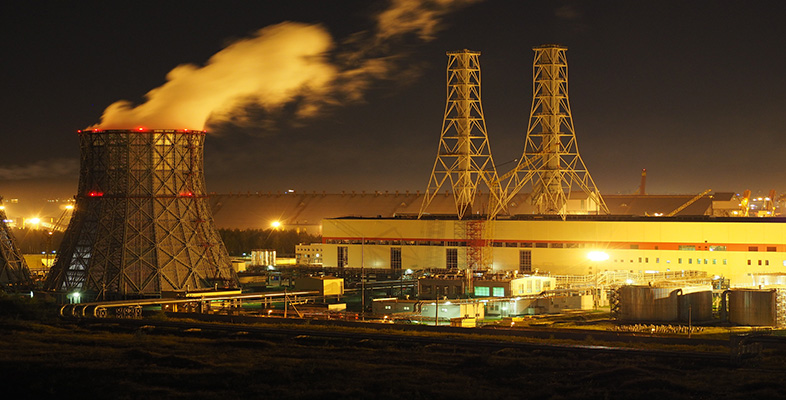3.2 Arguments against nuclear energy
Safety
With regard to safety, there is some suggestive evidence of leukaemia clusters and genetic defects associated with nuclear facilities. Despite the low levels of emissions, uncertainties about the impacts on health of radiation exposure from routine and accidental discharges make it preferable to avoid nuclear energy in favour of less problematic options. The precautionary principle should apply. There is also an abiding concern about the possibility of low-probability/high-consequence accidents such as Chernobyl, which could have widespread and devastating impacts on human health and environments.
Security
For cost and technical reasons nuclear plants must run continuously to supply baseload electricity. The more the baseload is provided by nuclear the less room there will be for renewables offering baseload low-cost electricity. In respect of energy security, nuclear relies on foreign sources of uranium, which could become scarcer or of lower grade if worldwide demand increases rapidly in response to a nuclear renaissance. Just as some gas comes from potentially politically unstable countries, so the UK ‘may become equally dependent on uranium imports from similar foreign sources’ (House of Commons, 2006, p. 36). Then there are the risks of proliferation and terrorist attack. The destructive potential of nuclear power is sometimes presented in dramatic language: for example, Ulrich Beck (1992) pronounces that ‘the effect only exists when it occurs, and when it occurs, it no longer exists, because nothing exists any more’ (p. 38). It is argued that nuclear plants are particularly attractive targets and therefore vulnerable to terrorist attacks, which, if successful, could precipitate uncontrollable and widespread devastation. For reasons of security nuclear plants are closely guarded and fenced off, with limited access. In some countries they have been the scenes of clashes, sometimes violent, between police and protesters.
Economics
Nuclear energy has high capital costs relative to other options (around three times those of fossil-fuel plants) and, together with long lead times (about ten years) and long operating periods (now up to sixty years), this represents a considerable investment risk to private capital. Critics point to a tendency for ‘appraisal optimism’ to underestimate costs and, in the absence of guaranteed prices, to the problem of achieving a sufficiently high rate of return over a very long period in a liberalised market, albeit within a context of carbon pricing. Cost overruns and failure to meet deadlines have been the norm for the industry so far. There is also the possibility that the cost of uranium could increase in the longer term as supplies diminish and lower grades are used. Costs of decommissioning and waste management are difficult to calculate over such long periods and it is almost inevitable that subsidy will be needed in one form or another.
Environment
While nuclear energy is certainly low-carbon, it is not carbon-free. The nuclear cycle involves mining, milling, fuel enrichment and fabrication, all of which require energy, at present coming mainly from high-carbon sources. Energy is also consumed in the construction of nuclear plants and in the rear-end activities of the nuclear cycle: reprocessing, decommissioning and waste management. Nuclear energy’s critics argue that, overall, the contribution of new nuclear plants to carbon reduction is likely to be modest and can be met by other means, notably renewables and energy efficiency. Nuclear energy has an impact on the environment in other ways too. Uranium mining and the associated tailing ponds scar and contaminate landscapes and there are concerns about possible impacts on marine ecosystems arising from discharges into coastal waters.
Radioactive waste
The problem of radioactive waste has been a major source of opposition to nuclear energy. Long-term storage presents a risk to present and future generations and there is the possibility that containment systems in a deep repository will not prevent the release of radionuclides into the environment in the distant future. While it is recognised that the problem of legacy wastes (those arising from past and current activities) must be managed, additional wastes from a new building programme would exacerbate the problem. Since there is, as yet, no acceptable long-term solution to the management of high-level wastes, there should be no new nuclear programme.
Public acceptability
While public opinion varies on the question of nuclear energy, polls consistently report overwhelming concern about radioactive waste. Nuclear investment diverts attention and resources from renewables and energy efficiency, which can contribute far more to carbon reduction. New nuclear stations will not be ready in time to plug the energy gap but will lock us in to an inflexible form of power supply for sixty years or more. Nuclear power stations and waste management facilities create fear, anxiety and blight among the communities in which they are sited. Nuclear activities are imposed on vulnerable communities who bear the risks on behalf of society as a whole. Moreover, the legacy of nuclear activities passes a burden on to the future, extending down the generations.
